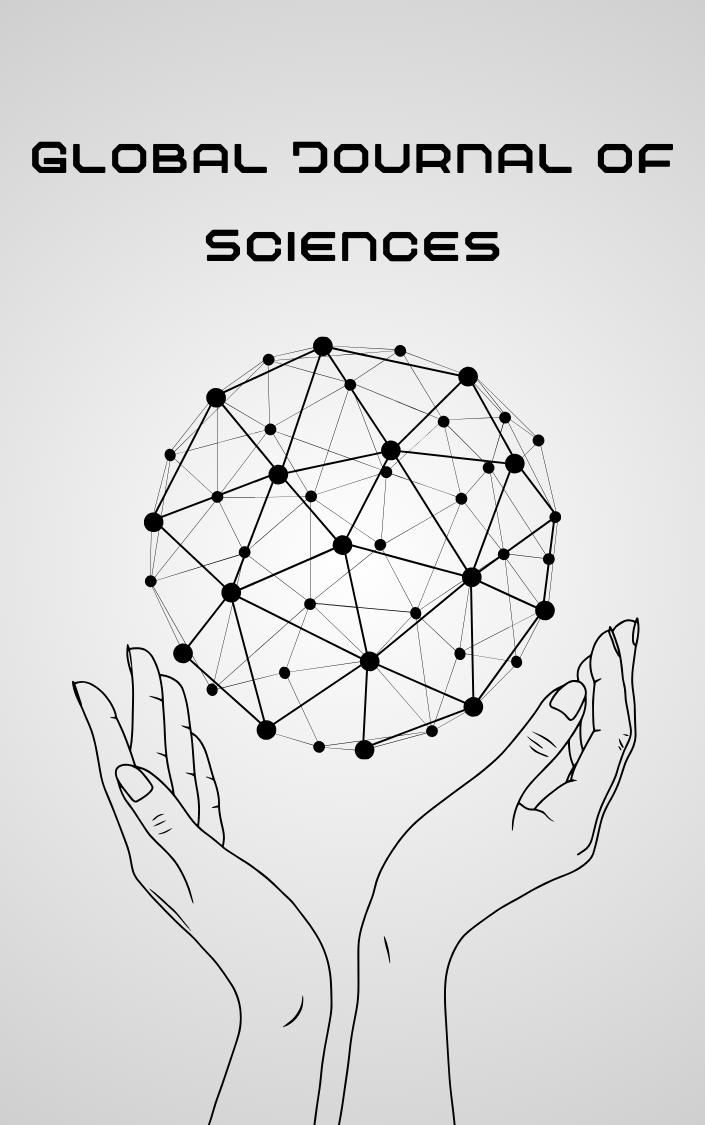AI-Enabled IoT System for Smart Healthcare and Emergency Response in Developing Countries
DOI:
https://doi.org/10.48165/gjs.2025.2104Keywords:
Iot powered by AI Intelligent emergency, response, Predictive analytics federated learning Smart, healthcare Real-time patientAbstract
This paper presents a novel AI-enabled Internet of Things (IoT) framework to transform healthcare delivery and emergency response in developing countries. The proposed system combines wearable sensing based on TinyML, deep learning inference on-device, and triage powered by reinforcement learning in a hierarchical edge–cloud architecture optimized for data privacy and low latency. To enable adaptive edge–cloud orchestration for real-time analytics and predictive diagnostics without jeopardizing patient data, federated learning is used for decentralized, secure model training. By assessing vital signs, geolocation, geographical location, and resource availability, a reinforcement learning agent dynamically prioritizes emergencies, maximizing response times and triage effectiveness. In a simulated rural Sub-Saharan African environment, field validation produced diagnostic accuracy of over 93%, outperforming conventional cloud-only systems in speed and efficiency. The user-friendly interface facilitates multilingual, cross-modal communication through voice confirmation, app alerts, and SMS for populations with low literacy and internet access. The system's 2.3-second real-time warning latency makes it particularly useful for tracking infectious diseases, chronic conditions, and maternal care. This scalable, morally sound paradigm offers a guide for AI-driven health innovation in underprivileged environments, and it is in line with the UN Sustainable Development Goals (SDGs 3 and 9).
References
Crane, M., Lloyd, S., Haines, A., Ding, D., Hutchinson, E., Belesova, K., Davies, M., Osrin, D., Zimmermann, N., Capon, A., Wilkinson, P., & Turcu, C. (2021). Transforming cities for sustainability: A health perspective. Environment International, 147, 106366.
Albahri, O. S., Zaidan, A. A., Albahri, A. S., Zaidan, B. B., Abdulkareem, K. H., Al-qaysi, Z. T., Alamoodi, A. H., Aleesa, A. M., Chyad, M. A., Alesa, R. M., Kem, L. C., Lakulu, M. M., Ibrahim, A. B., & Rashid, N. A. (2020). Systematic review of artificial intelligence techniques in the detection and classification of COVID-19 medical images in terms of evaluation and benchmarking: Taxonomy analysis, challenges, future solutions and methodological aspects. Journal of Infection and Public Health, 13(10), 1381–1396.
Zhao, A. P., Li, S., Cao, Z., Hu, P. J. H., Wang, J., Xiang, Y., Xie, D., & Lu, X. (2024). AI for science: Predicting infectious diseases. Journal of Safety Science and Resilience, 5(2), 130–146.
Wang, J., Chen, Y., Hao, S., Peng, X., & Hu, L. (2019). Deep learning for sensor-based activity recognition: A survey. Pattern Recognition Letters, 119, 3–11.
Alakus, T. B., & Turkoglu, I. (2020). Comparison of deep learning approaches to predict COVID-19 infection. Chaos, Solitons & Fractals, 140, 110120.
Chieregato, M., Frangiamore, F., Morassi, M., Baresi, C., Nici, S., Bassetti, C., Bnà, C., & Galelli, M. (2022). A hybrid machine learning/deep learning COVID-19 severity predictive model from CT images and clinical data. Scientific Reports, 12(1), 1–15.
Chen, M., Hao, Y., Hwang, K., Wang, L., & Wang, L. (2017). Disease Prediction by Machine Learning over Big Data from Healthcare Communities. IEEE Access, 5, 8869–8879.
Absur, Md. N. (2022). Anomaly Detection in Biomedical Data and Image Using Various Shallow and Deep Learning Algorithms, 45–58. https://doi.org/10.1007/978-981-16-6460-1_3
Rahmani, A. M., & Mirmahaleh, S. Y. H. (2021). Coronavirus disease (COVID-19) prevention and treatment methods and effective parameters: A systematic literature review. Sustainable Cities and Society, 64.
Nguyen, D. C., Pham, Q. V., Pathirana, P. N., Ding, M., Seneviratne, A., Lin, Z., Dobre, O., & Hwang, W. J. (2021). Federated Learning for Smart Healthcare: A Survey. ACM Computing Surveys, 55(3)
Matin, A., Islam, M. R., Wang, X., Huo, H., & Xu, G. (2023). AIoT for sustainable manufacturing: Overview, challenges, and opportunities. Internet of Things, 24, 100901.
WHO (2025). Global Initiative on Digital Health. (n.d.). Retrieved August 13, 2025 Usman, A. G., Almousa, M., Daud, H., Duwa, B. B., Suleiman, A. A., Ishaq, A. I., & Abba, S. I. (2025). Second-order based ensemble machine learning technique for modelling river water biological oxygen demand (BOD): Insights into improved learning. Journal of Radiation Research and Applied Sciences, 18(2), 101439.
Goni, I., Bali, B., Ahmad, B. M., Duwa, B. B., & Iwendi, C. (2024). Improving Telemedicine with Digital Twin-Driven Machine Learning: A Novel Framework. Global Journal of Sciences, 1(2), 58–70.
Ibrahim, A. U., Ozsoz, M., Al-Turjman, F., Coston, P. P., & Duwa, B. B. (2020). How Artificial Intelligence and IoT Aid in Fighting COVID-19. AI-Powered IoT for COVID-19, 159–168.
Duwa, B. B., Ozsoz, M., & Al-Turjman, F. (2020). Applications of AI, IoT, IoMT, and Biosensing Devices in Curbing COVID-19. AI-Powered IoT for COVID-19, 141–158.
Uzun Ozsahin, D., Duwa, B. B., Ozsahin, I., & Uzun, B. (2024). Quantitative Forecasting of Malaria Parasite Using Machine Learning Models: MLR, ANN, ANFIS and Random Forest. Diagnostics, 14(4), 385.
Yang, Q., Liu, Y., Chen, T., & Tong, Y. (2019). Federated machine learning: Concept and applications. ACM Transactions on Intelligent Systems and Technology, 10(2).
Uzun Ozsahin, D., Mustapha, M. T., Bartholomew Duwa, B., & Ozsahin, I. (2022). Evaluating the Performance of Deep Learning Frameworks for Malaria Parasite Detection Using Microscopic Images of Peripheral Blood Smears. Diagnostics, 12(11), 2702.
Ibrahim, A. U., Engo, G. M., Ame, I., Nwekwo, C. W., & Al-Turjman, F. (2025). I-BrainNet: Deep Learning and Internet of Things (DL/IoT)-Based Framework for the Classification of Brain Tumor. Journal of Imaging Informatics in Medicine.
Fernandez, R. M. (2020). SDG3 Good Health and Well-Being: Integration and Connection with Other SDGs, 629–636.
Johnson, A. E. W., Pollard, T. J., Shen, L., Lehman, L. W. H., Feng, M., Ghassemi, M., Moody, B., Szolovits, P., Anthony Celi, L., & Mark, R. G. (2016). MIMIC-III, a freely accessible critical care database. Scientific Data, 3.
Duwa, B. B., Onakpojeruo, E. P., Uzun, B., Hussain, A. J., Ozsahin, I., David, L. R., & Ozsahin, D. U. (2024). Ensemble Predictive Modeling for Dementia Diagnosis. Proceedings - International Conference on Developments in ESystems Engineering, DeSE, 352–357.

